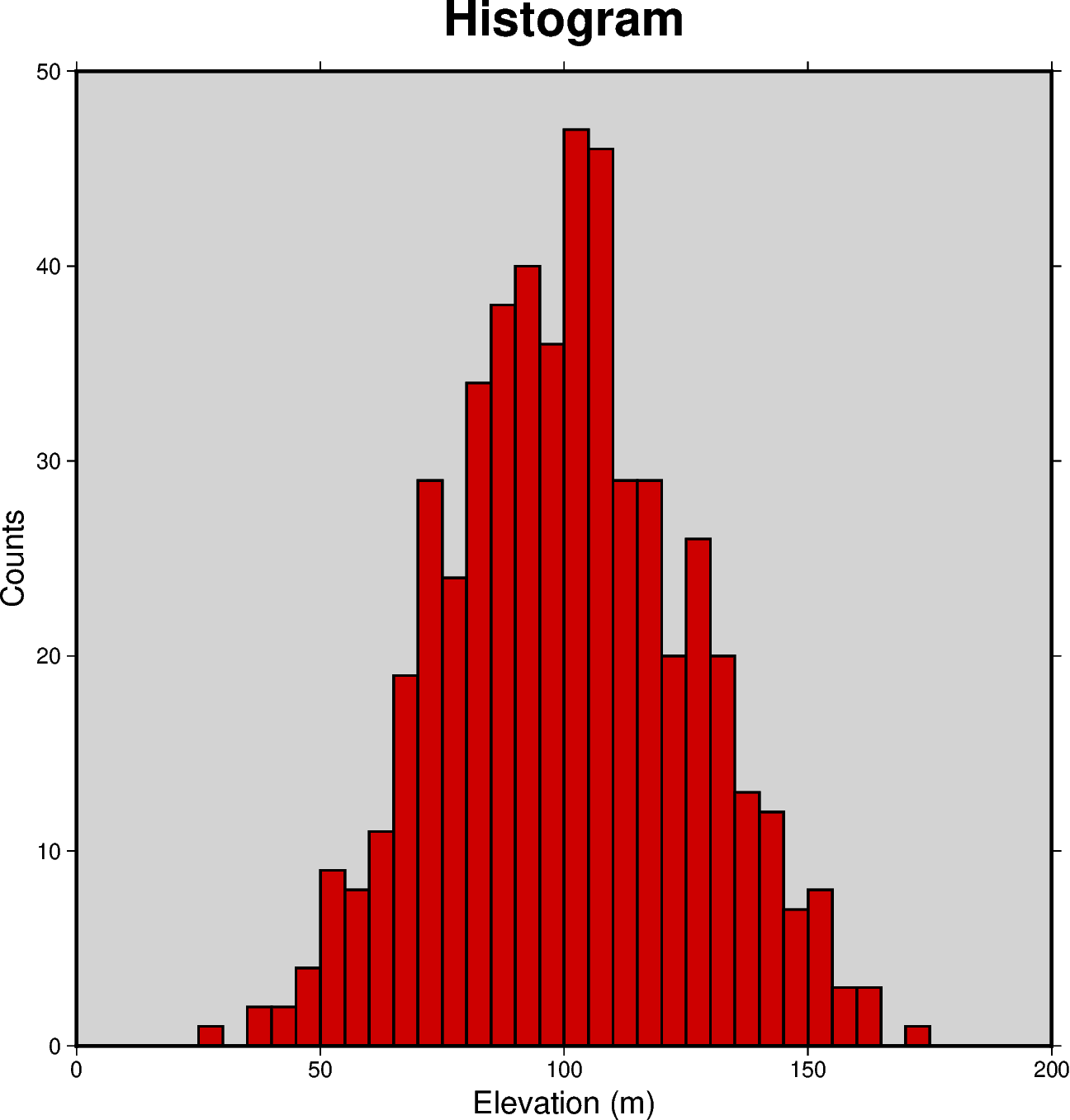Note
Go to the end to download the full example code.
Histogram
The pygmt.Figure.histogram method can plot regular histograms.
Using the series parameter allows to set the interval for the width of
each bar. The type of the histogram (frequency count or percentage) can be
selected via the histtype parameter.

import numpy as np
import pygmt
# Generate random elevation data from a normal distribution
rng = np.random.default_rng(seed=100)
mean = 100 # mean of distribution
stddev = 25 # standard deviation of distribution
data = rng.normal(loc=mean, scale=stddev, size=521)
fig = pygmt.Figure()
fig.histogram(
data=data,
# Define the frame, add a title, and set the background color to
# "lightgray". Add labels to the x-axis and y-axis
frame=["WSne+tHistogram+glightgray", "x+lElevation (m)", "y+lCounts"],
# Generate evenly spaced bins by increments of 5
series=5,
# Use "red3" as color fill for the bars
fill="red3",
# Use the pen parameter to draw the outlines with a width of 1 point
pen="1p",
# Choose histogram type 0, i.e., counts [Default]
histtype=0,
)
fig.show()
Total running time of the script: (0 minutes 0.214 seconds)